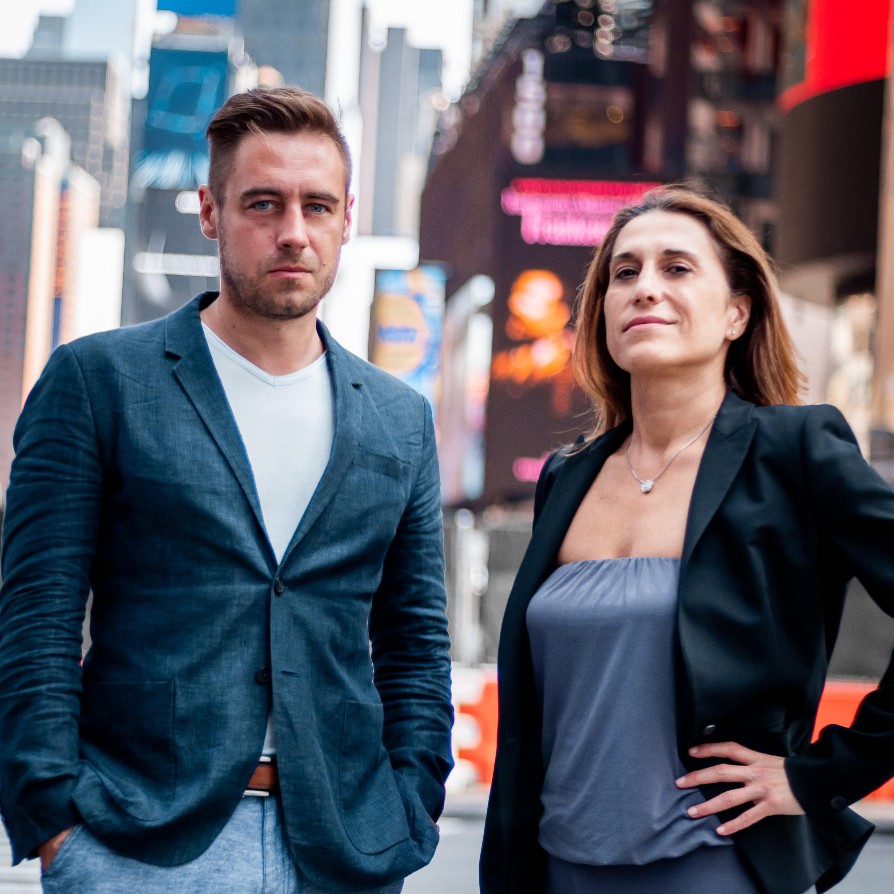Denis Belkevich is a serial entrepreneur and the co-founder of Fuelarts, an ArtTech platform dedicated to fostering the growth of the Web3 ecosystem and ArtTech startups. In a recent interview with Fine Art Shippers, Denis offered insights into the NFT market, discussed the mistakes that have been made with this technology, and talked about the current trends at the intersection of art and technology.
NFT and Digital Art: Insights from Fuelarts Cofounder Denis Belkevich
Fuelarts is an investment platform, specializing in the ArtTech industry. Can you tell us about the genesis of Fuelarts? What inspired you to launch the company?
Denis Belkevich: I am an art economist who graduated from the Sotheby's Institute of Art in 2013. Over the years, I have been involved in managing private collections and various art projects. One of my biggest dreams was to create my own art index.
As I developed the index in 2017, I realized it was a startup, which meant I needed investor support. People kept asking if I had gone through an accelerator, so I decided to find one. However, there were no niche ArtTech accelerators around that time. Tech accelerators suggested removing the art part and focusing on creating an index for the stock market. Art accelerators at major museums advised me to remove the tech and focus more on curation while relying on grants instead of seeking investments.
Looking for guidance, I approached my former teacher, Roxanna Zarnegar, an adjunct faculty member at Sotheby's Institute of Art. She suggested creating our own accelerator, Fuelarts. In 2019, we successfully launched the first vertical ArtTech accelerator as co-founders.
How has Fuelarts evolved since its foundation?
Since its establishment in 2019, Fuelarts has expanded into three areas. The first area focuses on acceleration, where we conduct our own acceleration programs and provide corporate acceleration programs for major brands. Recently, we successfully organized a blockchain accelerator for Tezos and supported ten new startups in their art ecosystem through our programs.
The second area is analytics, where we produce an investment report covering investments and infrastructure in the ArtTech and NFT sectors. We also share information through newsletters, webinars, and interviews to reach a wider audience.
The third area involves an investment fund, which will bring greater stability to our operations in the future. We are currently in the final stages of fundraising.
Let’s discuss the notion of the ArtTech industry. How would you define it?
The concept of ArtTtech has been around since 1988 when Artnet, a company based in New York, started publishing auction results using fax machines. This marked the initial synergy process of art and technology. As the internet developed, Artnet transitioned to sending results via email and eventually created a website for real-time access to art. Thus, ArtTech as a field emerged in the late 1980s, aligning with the rise of the internet and the computerization of various aspects of life.
It's worth noting that in 1990, the first version of Photoshop was released, revolutionizing digital art creation. This milestone also contributed to the development of ArtTech. Today, this industry encompasses production, trade, management, and analytics, which are the four elements of the value chain. This implies that assets need to be created, sold, managed, and analyzed to help collectors make informed decisions about buying or selling their existing or new assets.

What kind of startups are currently emerging at the intersection of art and technology, and in your opinion, what shows promise, and what may be just a passing trend that will soon fade away?
Every ten years, we see the reemergence of the same business models. To create a successful business model for the emerging Web3 era, I believe it's crucial to look back at history rather than futurism books. The most fruitful ideas were conceived during the Web2 and Web1 eras, and even as far back as the 18th century. While the core business models remain unchanged, the key is adapting them to current realities and the needs of our audience.
Over the past year, I've observed a notable expansion of startups in the artificial intelligence field across various sectors, including medicine, education, and ArtTech. In the latter, there has been a significant focus on generative art.
In 2023, it's clear that artificial intelligence is playing a significant role. I expect this trend to continue for several more years, including in the investment field. It's important to understand that startups require substantial time to succeed. Today’s market favorites have been exploring AI for at least a year or two, if not longer. Investors are not interested in those who hastily shifted from NFTs to AI just following market trends.
As we near the end of a five-year cycle since the emergence of NFTs, the ArtTech market has reached a more mature state, with all four elements of the value chain (production, trade, management, and analytics) operating at a similar level. The next development phase may involve leveraging artificial intelligence for further advancements in the field.
In your recent newsletter, you mention the mistakes of the NFT market that should be taken into consideration when dealing with AI and generative art. Could you elaborate on these mistakes?
Initially, there was a significant focus on marketplaces, with money being invested in NFT sales platforms rather than content creation. Unfortunately, there was a lack of academic support for NFTs, resulting in a disconnect between traditional art collectors and the younger audience of NFT buyers. This lack of academic grounding and integration into art history made museums hesitant to acquire NFTs, leading to limited appreciation and value within the digital art collector community.
Therefore, it’s essential to establish a comprehensive ecosystem that includes analytics, content creation, and marketplaces. Development should have started with robust analytics, followed by content creation, and then the introduction of marketplaces, which was not the case. Early efforts should have focused on integrating NFTs into art history, gaining academic validation, and securing support from museums and curators. By recognizing these mistakes and addressing them, we can cultivate a stronger and more sustainable ArtTech market.
How do you see the evolution of NFT and digital art in the coming years?
To better understand the dynamics of the NFT market, it is essential to distinguish between NFTs and digital art. NFT is a legal term that denotes ownership of digital works. Similar to purchasing a framed artwork or a limited edition print, acquiring an NFT signifies ownership of a digital artwork. NFTs act as digital passports, unlocking opportunities for liquidity, sales, and ownership rights in the digital realm. However, NFTs have discredited themselves due to the influx of speculators. For instance, in 2021, the majority of NFT sales were speculative transactions, resulting in a temporary decline in the market.
Another issue is the absence of a unified regulatory framework for these assets, both in the physical and digital spheres. While countries like Japan and some Caribbean nations have made progress in regulating digital assets for their financial interests, major economies have yet to establish a common understanding.
Presently, there is a growing tendency to use the broader term "digital art" instead of NFT, encompassing blockchain art, crypto art, meme art, generative art, and NFTs proper. The ecosystem of digital art, consisting of virtual museums, galleries, art fairs, and biennales, is gradually emerging. It brings forth numerous tools such as expertise, attribution, exhibitions, and publications. These tools are being integrated into the NFT world to cater to the preferences of the new audience. I hope that this trend will continue, taking into account the mistakes we have discussed.
Interview by Inna Logunova Photos: Fuelarts cofounders Denis Belkevich and Roxanna Zarnegar
